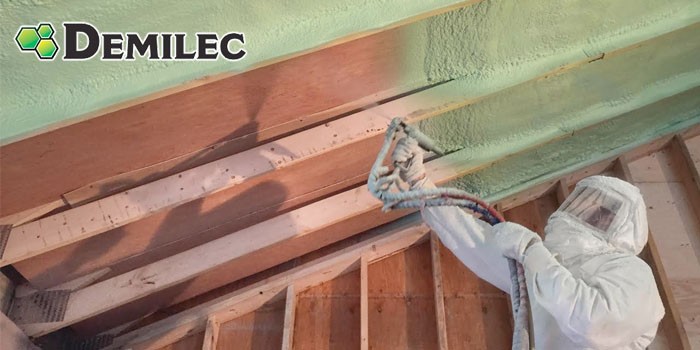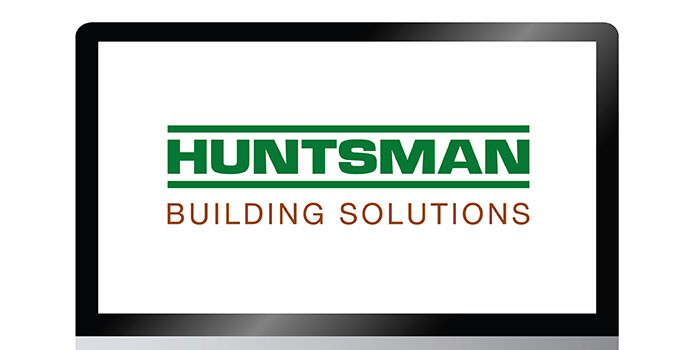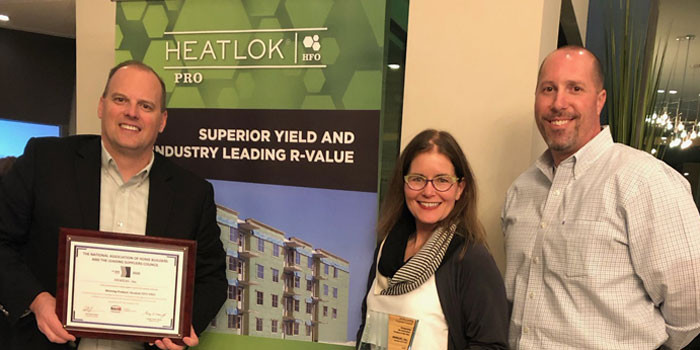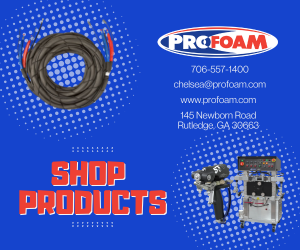Demilec's Next Generation Spray Foam Trickles Into the Market

ARLINGTON, TX – March 21, 2017 – Demilec has introduced a reformulated spray polyurethane foam that has only a tiny fraction of the global warming potential of its predecessors.
The Texas-based manufacturer, with distribution in both the U.S. and Canada, now offers a medium-density closed-cell spray foam made with a hydrofluoroolefin (HFO) blowing agent, the next generation of chemistry for the industry.
Blowing agents are essential ingredients in spray foam insulation. They create the tiny bubbles of trapped gas that slow the movement of heat and make foam such a good insulator. But the most common blowing agent in spray polyurethane foam today, a hydrofluorocarbon, has a global warming potential (GWP) more than 1,000 times that of carbon dioxide. The HFO Demilec now offers — a chemical made by Honeywell called Solstice — has a GWP of 1.
Demilec's Heatlok XT HFO enters the market three years ahead of a federal ban on HFC 245fa, the blowing agent that's now used in most brands of closed-cell spray polyurethane foam. The high GWP of hydrofluorocarbons is one reason some builders flatly refuse to use spray foam, despite its superior insulating and air-sealing characteristics.
Tom Harris, Demilec's vice president for building science and innovation, said that Heatlok XT HFO is available nationally, although the spray foam will come at a higher cost than foam made with HFCs. Without being specific, Harris said that builders who want to use it will pay a slight "premium."
RELATED Johns Manville’s Corbond® oc SPF Achieves New Code Compliance, How SWD Urethane's Ultra-Low Density Spray Polyurethane Foam is Elevating the Industry , Accella to Purchase Spray Foam Business from Covestro, Firestone Building Products To Acquire Gaco Western
Higher cost, better performance
Harris said the new spray foam has several advantages over products made with HFCs. One is an increase in the maximum thickness of each layer, or "lift," of foam that can be applied without the risk it will catch on fire.
Spray foams are mixed on site in an application gun. The ensuing chemical reaction is exothermic — producing heat as well as the characteristic foam. If the foam applied in a single pass is too thick, the chemical reaction can generate so much heat that it catches on fire. Typically, spray foam can be applied in lifts of a couple of inches, but Harris said XT HFO can be applied 6 1/2 inches thick in a single pass.
The HFO-blown foam also has high R-values: R-6.3 per inch when measured in a 2-inch thick layer, but R-7.4 per inch at a depth of 8 inches, Harris said. The "stacked R-value" is higher, he said, because the thermal resistance of a thicker layer of foam is not linear — it adds up faster than a simple multiplication of its 1-inch R-value would suggest.
Contractors who have used the foam say it handles better than HFC-blown version; it has less of a tendency to "stick in the gun," which reduces the number of times a gun must be cleaned during the day, according to Harris.
RELATED Johns Manville’s Corbond® oc SPF Achieves New Code Compliance, How SWD Urethane's Ultra-Low Density Spray Polyurethane Foam is Elevating the Industry , Accella to Purchase Spray Foam Business from Covestro
The transition has been slow
Moving from one blowing agent to another is a painful process for manufacturers. Although Honeywell intended Solstice as a drop-in replacement for HFC 245fa, it apparently hasn't been that simple.
"To change a blowing agent, it's a several year process," said Rick Duncan, technical director for the Spray Polyurethane Foam Alliance, an industry trade group. "They have to reformulate their B side and retest all their products in the field, and redo all the fire testing. It costs hundreds of thousands of dollars to do that, and usually a couple of years."
Of the 20 or so major U.S. producers of spray foam component chemicals, what the industry calls "systems houses," only Lapolla and now Demilec are known to offer HFO-blown foam with a density of 2 lb. per cubic foot — the type of closed-cell foam used in wall and roof cavities. NCFI and Henry Co. have HFO-blown 3-lb. spray foam, the type used on roof exteriors, but not 2-lb. versions.
NCFI senior product manager Jason Hoerter said that the company is working on a medium-density HFO formulation but isn't quite ready to roll it out. "I would hope by the end of the year," he said, "if not sooner."
Everyone will have to make the switch eventually, however. Neither Harris nor Duncan think that the change of guard in Washington, with new leadership in the White House and at the EPA, will affect the 2020 deadline currently on the books.
In the meantime, do builders really care? Some obviously do, but the clamor for more environmentally benign blowing agents seems to have fallen off in the last few years, Harris said.
Part of the reason is that HFC-blown foam still meets the letter of the law, and because of that there isn't the pressure from building owners and product specifiers for newer versions. Plus, insulation contractors can be wary of experimenting with a new product that hasn't been used much in the field, what Harris calls the "comfort factor."
"The conversation about environmental impact has waned a bit in the last few years," he said. "That's too bad, but it will change again. The industry has been through this transition many times. We wanted to be in front of the curve."
Harris said he expects Demilec, which for now still offers at HFC-blown version, to be "100% HFOs" by the end of this year.
No matter what blowing agents are used for the spray foam, some builders and designers are likely to stay away from the insulation. 475 High Performance Building Supply, for example, is a proponent of foam-free construction. The firm argues against foam on a number of grounds, including the toxicity of its ingredients and the danger it poses in the event of fire. Like-minded designers and builders would rather specify a material like cellulose or mineral wool and stay away from insulation based on petrochemicals.
Honeywell says that interest is growing
Honeywell said through a spokeswoman that spray foams formulated with Solstice have "grown tremendously" over the last year. But the company did not provide any specifics on other manufacturers that might be getting ready to put their own HFO formulations on the market.
"The conversion to Solstice [liquid blowing agent] systems are being seen in both residential and commercial markets," the company said. "Over 30% of the systems houses have adopted Solstice systems well ahead of regulations. Why? Because the systems have better performance and are better for the environment. We are consistently seeing improved thermal performance and yields up to a 10 percent improvement."
One concern with contractors will be cost, but Honeywell said the impact should actually be minimal even if the price of the blowing agent itself is a little higher.
"The superior performance in thermal performance and yields will make these systems cost-neutral to the contractor on an installed basis," the spokeswoman said in an email.
The company also asserts there has been an "uptick" in the demand for products with a better environmental footprint, not the waning of interest Harris mentioned.
Disqus website name not provided.








































